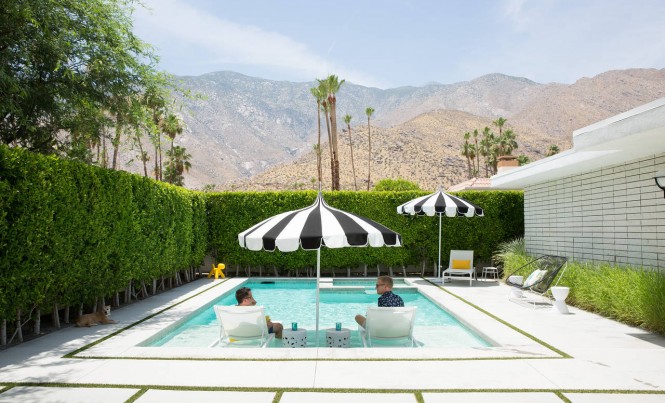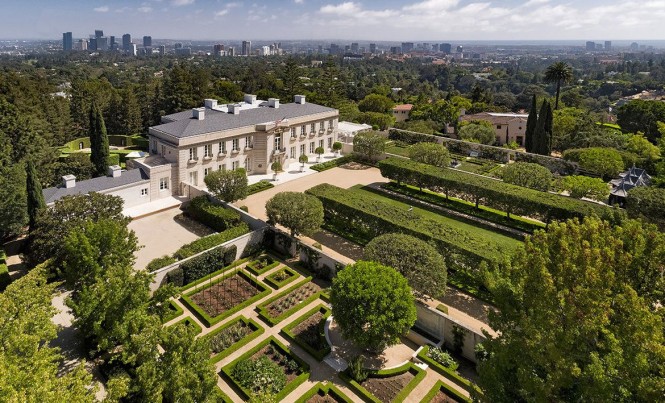
The tech scene is alive and well in Los Angeles, specifically in the westside beach communities between Malibu and LAX airport—namely Santa Monica, Venice, Marina del Rey and Playa del Rey—and the adjacent inland neighborhoods, including Playa Vista, Culver City, El Segundo and Mar Vista. Collectively, these neighborhoods where tech is prevalent, are known as Silicon Beach.
In the last 18 months, major technology companies with an entertainment bent either moved into new Silicon Beach office space or are set to do so. Snap Inc., the parent company of social media platform Snapchat, moved from Venice beach to Santa Monica; Google employees moved from Santa Monica into a remodeled 500,000-square-foot airplane hangar known as the “Spruce Goose” in Playa Vista; and HBO, Apple and Amazon Studios are slated to move creative segments of their businesses into new office space in downtown Culver City later this year.
As these newsworthy tech moves are taking place, real estate prices have finally leveled off in greater Los Angeles after a seven-year run-up that started in 2012, and led to many years of double-digit price growth. Median sales prices are down 4.5% to $1.455 million, according to Douglas Elliman’s Q1 2019 market report; and the number of sales declined, as inventory increased.
But that market data doesn’t tell the whole story, said Erin Kennelly, the executive director of research at the L.A.-based luxury brokerage, The Agency, who noted that when you dig into the numbers, what’s happening in real estate differs greatly depending on the neighborhood.
For now, Silicon Beach communities are holding strong, and performing among the best in the region.
“What we see is that Silicon Beach neighborhoods have among the lowest inventory and the best performance over the past year,” Mr. Kennelly said.
In addition to the impact on price, tech influence has also changed the type of homes that are desired and built in Silicon Beach; communities like Venice and Playa Vista look totally different than they did a decade ago, with more multi-million dollar modern homes in Venice, and more multi-family dwellings, including condos and townhouses, in Playa Vista. And as people get priced out of Silicon Beach, Mr. Kennelly said, the tech influence on price and design is spreading further east to neighborhoods including Echo Park and Silver Lake, where young buyers who often work in tech or tech-adjacent fields are putting down roots and either working remotely or commuting in.
When it comes to the question of why tech companies opened offices in L.A., the answer is simple, Mr. Kennelly said: They followed a pool of well-educated potential employees south from Silicon Valley down to the beachfront communities where those people wanted to live, which at the time, was much more affordable than the traditional tech hubs up north, such as San Francisco and Palo Alto. “This is what always happens,” he said. “Tech employers chase top talent, who have relocated for a better quality of life.”
As this tech workforce moved near the beach and the tech companies followed, the growth of the tech industry in L.A. “put legs under the city’s housing market,” said Paul Habibi, a professor in the Ziman Center for Real Estate at UCLA. “If real estate was strong before the tech sector, I think it’s made it increasingly so.”
Specifically, he continued, tech has helped the $1 million-to-$3 million segment of the market. “All the communities around Silicon Beach have undoubtedly succeeded due to the success of the tech sector,” he said.
Returning to the latest market data, Mr. Kennelly said the influence of tech is clear. In March, inventory in the greater L.A. region was 5.2 months, which means it will take active units an average of just over five months to sell. Anything under six months is considered tight inventory.
In Venice, inventory remains tight at 3.8 months. The same is true in Santa Monica, where inventory is at 3 months, and in the nearby communities of Palms and Mar Vista, where inventory is extremely low, at 1.4 months for single-family homes.
Another important metric is median sales price. While March data shows that prices in greater Los Angeles are up 1% compared to one year ago for single-family homes, Venice prices are up 8% compared to a year ago, to $2.481 million, Mr. Kennelly said, and Santa Monica prices are up 9% to $2.529 million.
Finally, homes in Santa Monica are still selling for 1% over list price, and 2% over list price in Culver City.
This upward price trend has also continued in Playa Vista, a mixed-use urban community that houses a slew of tech companies, including Facebook, YouTube, Electronic Arts and IMAX, alongside parks, restaurants and residential units, from one-bedroom rentals to multi-million dollar detached homes.
In February 2017, Playa Vista’s developer, Brookfield Residential, unveiled the most expensive residential units in the community—three-story, 4,500-square-foot detached villas with expansive indoor/outdoor entertainment space, in a development known collectively as Jewel. Priced starting in the high-$3 millions—well above other homes in the area—“people weren’t sure this would be a slam dunk,” said Kris Zacuto, an associate broker with Hilton & Hyland, who represents these properties.
But today, there are 11 closed sales, one unit in escrow, and only two Jewel units remaining, with a sales price for the project averaging above $4 million, Mr. Zacuto said.
“The success of Jewel is a testament to the overall impact and growth of the tech sector on the Westside of L.A., and the Silicon Beach vibe,” he said, noting that they just closed on a Jewel unit in the beginning of the second quarter at asking price, for $4.058 million.
“At this price point, these buyers could purchase a home anywhere in L.A.,” Mr. Zacuto said, “but they really value that sort of low-maintenance, lock-and-leave, amenities outside your door lifestyle that Playa Vista offers.”
In addition to an amenity-rich, walkable neighborhood, wealthy tech employees also have specific demands when it comes to the aesthetics and comfort of their space, said Venice-based designer and custom homebuilder Kim Gordon of Kim Gordon Designs.
For Ms. Gordon, who has lived and worked in Venice for 28 years, the tech industry has brought in a new slew of buyers, for whom the old stock of homes—either “cute, but not great” houses, with inconvenient design features, like tiny kitchens and backyards only accessible through a master bedroom, or “severe modern boxes”—just don’t work anymore.
That’s why when she works on a new project for a tech industry client—of which 80% of her clients now are—she brings in a strong indoor-outdoor influence, with al fresco dining options, floor-to-ceiling windows and landscaped water features. There’s always an open floor plan and a big kitchen, with en-suite bathrooms with most bedrooms, not just the master, which makes it comfortable for guests to stay over.
The tech industry has brought in people who want flexible homes, where they can have friends and colleagues over to have creative meetings and collaborate, she said. “People want to come home to a quieter, more comfortable environment, where they can focus on their projects.” When she works on the home, they often sell for over $5 million.
As some younger tech employees have been priced out of Silicon Beach, they’ve been moving east, to hip neighborhoods like Echo Park and Silver Lake, Mr. Kennelly said.
“We’ve seen the steady march of development move from the beach to downtown L.A.,” said Justin Barth, the owner/operator of Barth Partners, an L.A.-based development firm with a residential focus, noting that Venice was a completely different place 20 years ago and Culver City, located five miles inland, is far removed from what it was 10 years ago. “Silver Lake in undergoing those changes today.”
Much of the reason is because it’s conveniently located about five miles from the hip downtown Arts District and less than four miles from Hollywood, where Netflix has recently signed several leases for additional office space, that will bring their real estate footprint to over 1 million square feet of space in the next year and a half.
It’s also walkable, urban, and home to plenty of hip and interesting restaurants and businesses, such as bedding and bath company Parachute Home and a soon-to-be-open Erewhon Market (think a smaller and higher-end L.A.-based Whole Foods). Notably, both of these businesses also have flagship locations in Venice.
Real estate data supports this trend.
“Silver Lake is the hottest neighborhood in L.A. right now,” Mr. Kennelly said, with inventory remaining low at 3.3 months, and prices up 21% in March 2019 to $1.28 million compared to a year ago.
Other market indicators are also strong. The median days on the market for a listing is only 16 days, Mr. Kennelly said, and homes are typically selling for 4% over their list price.
To accommodate this new population and take advantage of their interest in more compact, urban homes, located close to amenities, The Agency Development Group is representing a new Silver Lake residential project, called VICA, developed by Mr. Barth.
VICA, which recently topped out at five stories on Sunset Boulevard, will have 31 modern residences—many of them available for under $1 million—above a ground floor restaurant space, which Mr. Barth said is the first West Coast location of a popular cafe that’s located in Manhattan’s SoHo neighborhood. (He declined naming the cafe). It will be finished in late-2019, and according to Mr. Barth, represents the “first new condominiums built in Silver Lake in over a decade.”
Before this project, his company also developed 10 small lot homes called Ridge Silver Lake. Another small lot home project by a different developer, called 850 North Coronado, which will be located just south of Sunset Boulevard, is also in the works, as is an apartment project by CIM Group that will be located near Erewhon, and a Palisociety boutique hotel called Silver Lake Pool and Inn.
Despite the community’s typically challenging approval process when it comes to residential development, Mr. Barth said he thinks there will be more projects in Silver Lake in the years to come.
And Mr. Kennelly suspects there will also be more of a local tech influence as well. “Smart tech companies will continue to chase lifestyle perks,” he said, “and open offices in downtown L.A. or near Silver Lake—closer to the places their work force wants to live.”
Photo Credit: https://www.intercontinentallosangeles.com/things-to-do/venice-beach
Source: https://www.mansionglobal.com/articles/los-angeles-tech-scene-expands-beyond-silicon-beach-202795
Author: Anne Machalinski






/arc-anglerfish-arc2-prod-tronc.s3.amazonaws.com/public/3UULAL6OSRFKXJCPL6IQEFR4UI.jpg)